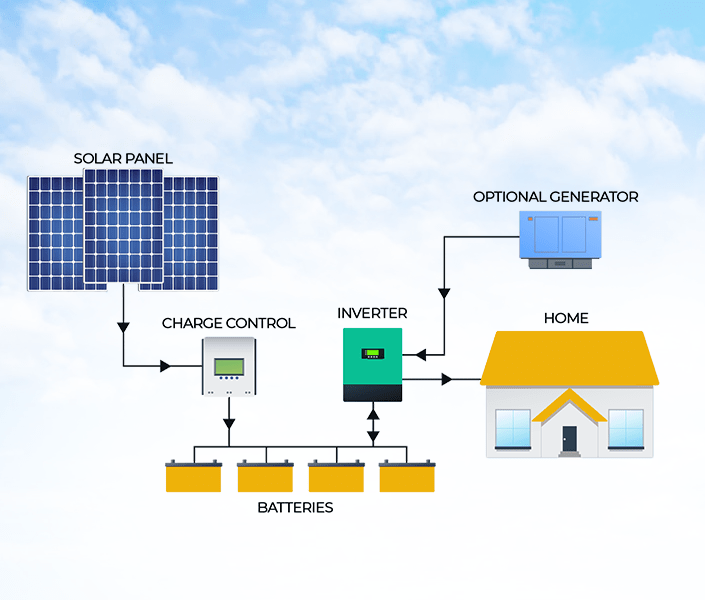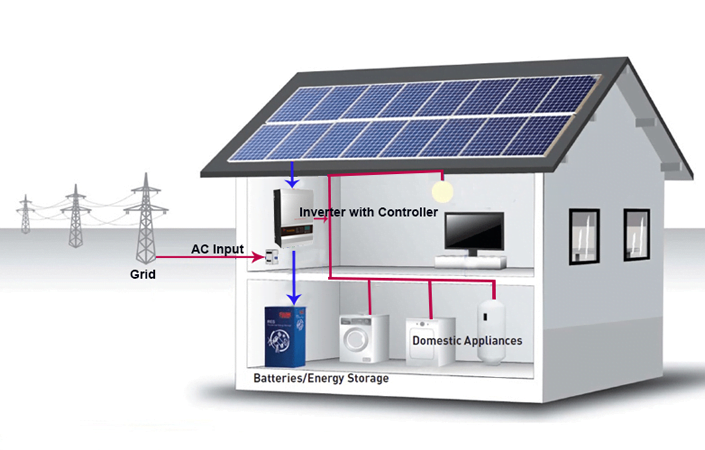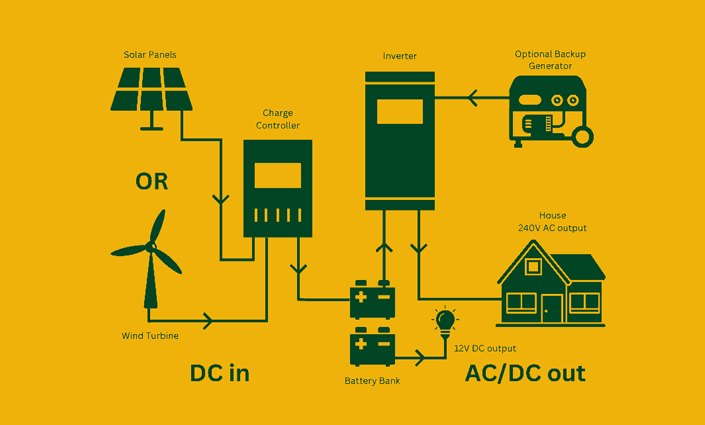What is an Off-Grid Solar System?
An off-grid solar system is a stand-alone power solution that operates independently of the utility grid. It generates electricity from solar panels and stores excess energy in batteries for use when sunlight is unavailable, making it ideal for remote locations without grid access. Unlike on-grid systems, off-grid setups require additional components such as solar batteries, charge controllers, and backup generators to ensure a reliable power supply during nighttime or cloudy days. These systems provide energy independence but require careful sizing to meet daily electricity needs without running out of power. Though more expensive due to battery costs, off-grid solar systems offer a sustainable and self-sufficient energy solution for homes, farms, and businesses in areas with unreliable or no electricity infrastructure.


Why Use an Off-Grid Solar System?
An off-grid solar system is ideal for those seeking energy independence, especially in areas where grid electricity is unreliable or unavailable. It allows users to generate and store their own power using solar panels and batteries, ensuring an uninterrupted electricity supply even during blackouts. This system is particularly beneficial for remote locations, such as rural homes, farms, or off-grid cabins, where extending power lines is expensive or impractical. Additionally, off-grid solar reduces dependence on fossil fuels, making it an eco-friendly solution that minimizes carbon emissions. While the initial investment is higher due to battery costs, it eliminates monthly electricity bills in the long run. By providing complete autonomy over energy production and consumption, off-grid solar systems offer a sustainable, self-sufficient, and long-term power solution.
How to Install an Off-Grid Solar System?
To install an off-grid solar system, first assess energy needs and select the right components, including solar panels, charge controller, batteries, and an off-grid inverter. Choose a sunlit location, mount the panels, and connect them to the charge controller to regulate voltage. Install a battery bank to store excess power and link it to the inverter to convert DC to AC electricity. Ensure proper wiring, grounding, and safety measures before testing the system. Regular maintenance and monitoring are essential for efficiency. This setup provides energy independence, making it ideal for remote areas.

